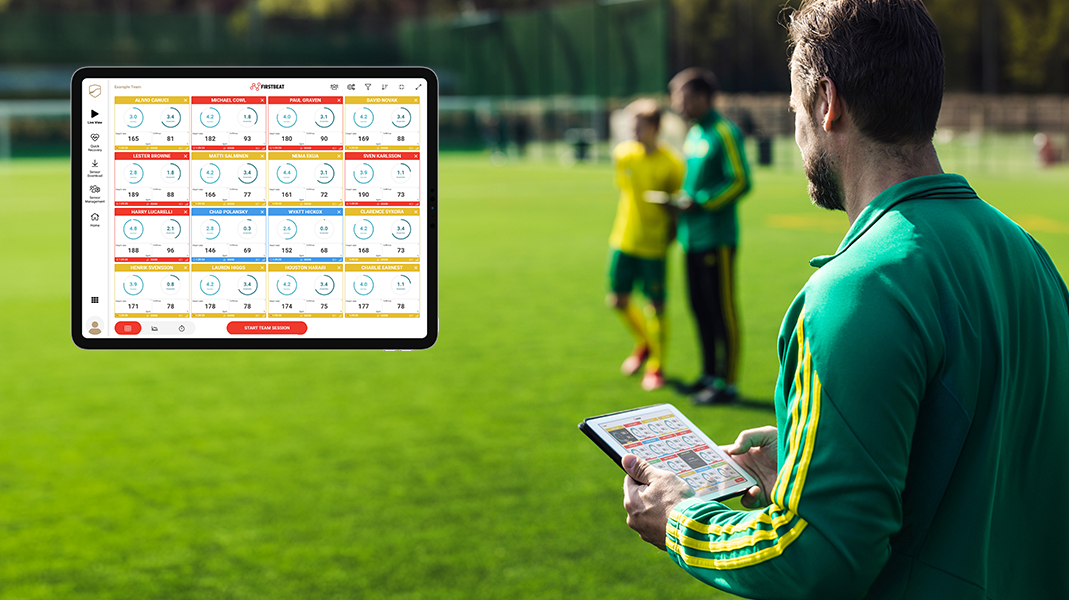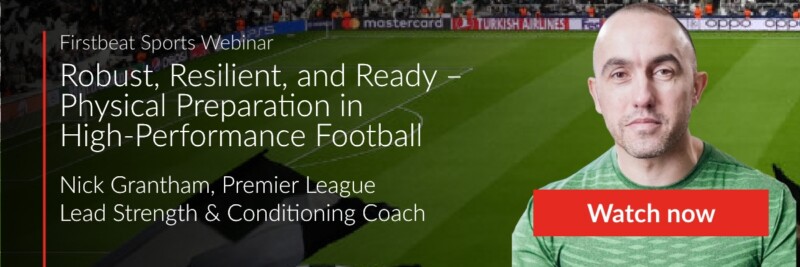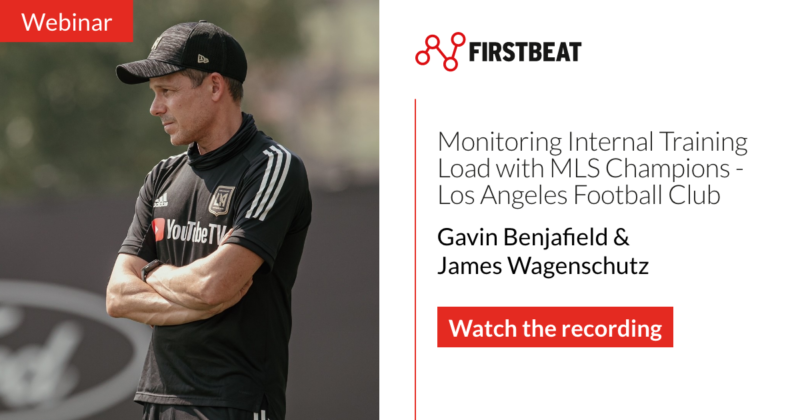
At Firstbeat Sports, we’ve utilized our extensive big data to compare the time youth soccer players and men’s professionals spend in each heart rate zone during their training sessions. The results provide a fascinating glimpse into how training intensity and workload vary across different age groups.
Heart Rate Zones: A Quick Overview
Heart rate zones are essential indicators of the energy systems athletes use during physical activity. These zones range from Zone 1, which corresponds to 50-60% of an athlete’s maximum heart rate (HRmax), to Zone 5, which represents 90-100% HRmax. Each zone reflects different levels of exertion, from light warm-ups to peak-intensity efforts.
Time Spent in Heart Rate Zones
Our analysis shows a distinct difference in how youth soccer players and professional men allocate their time across these heart rate zones.
The data suggests that younger athletes, such as U17 players, experience higher training intensities, with approximately 15% more total Training Impulse (TRIMP) and 36% more total Movement Load compared to their professional counterparts.
View this post on Instagram
Training Load Across Age Groups
Younger players also tend to spend more time in training than their older, professional counterparts. This trend underscores the importance of closely monitoring training loads in younger athletes to ensure they are not overburdened, which could potentially hinder their development or lead to injury.
Why Monitoring Youth Athletes Matters
By closely monitoring youth players, coaches can optimize training for long-term athletic development and success. They can track the young athlete’s progress over a longer time and make informed adjustments as needed.
Interested in more soccer-specific insights? Download our free soccer training load guide here.
If you liked this article, you should subscribe to our newsletter.
You might also be interested in

Robust, Resilient, and Ready – Physical Preparation in High-Performance Football
Webinar with special guest Nick Grantham, Lead First Team Strength and Conditioning Coach in the Premier League, and Firstbeat’s Nigel Stockill. See the recording Learn from the Best Discover Nick’s proven strategies and…

Monitoring Internal Training Load with MLS Champions – Los Angeles Football Club
Build training sessions using data to optimize performance and achieve results. Getting results in sports is increasingly decided by ever-decreasing margins. Being able to see accurate, personalized, and useable training…